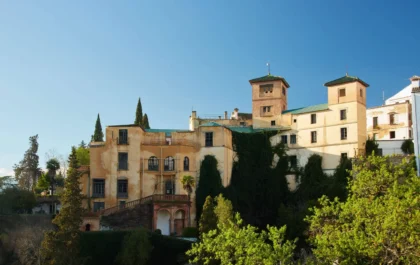Vincennes, an enchanting locale southeast of Paris, unfolds a tapestry of historical allure and captivating attractions. Among these, the Sainte-Chapelle du Château de Vincennes, a 15th-century Gothic gem nestled within the Château de Vincennes, commands attention. Let’s delve into the historical wonders of this majestic landmark:
Unveiling Construction and Purpose:
Completed in 1544 after almost a decade of meticulous construction, Sainte-Chapelle du Château de Vincennes was initially envisioned as a smaller counterpart to the now-ruined Sainte-Chapelle of the Louvre. Beyond its primary role as a place of worship, the chapel found itself serving an unconventional purpose as a prison due to its strategic location within the Château de Vincennes.
Innovative Use of Stained Glass:
The stained-glass windows of the chapel took on a unique role; they ingeniously obstructed the view of prisoners, referred to as “prisoners of religion,” adding a fascinating layer to the chapel’s historical narrative.
Dual Role as Sanctuary:
In addition to its prison function, the chapel evolved into a sanctuary for immigrants during specific periods, showcasing its adaptability and significance throughout different eras.
Marvelling at Architectural Grandeur:
This chapel distinguishes itself with impeccably preserved Gothic architecture, adorned with intricate details and original gilded garlands featuring vine leaves, buds, and fruits.
Historical Significance Echoing Through Centuries:
Acknowledged as a historic monument by the French government in 1862, the chapel witnessed pivotal moments in French history, serving as a hospice and refuge during World War II.
Restoration and Ongoing Reverence:
In 2011, the chapel underwent extensive restoration, reopening its doors to the public. Despite its rich history, the chapel remains an active place for regular mass services by the parish of Vincennes.
Navigating History & Information:
Commissioned by King Charles V, Sainte-Chapelle du Château de Vincennes contributes to a 15th-century expansion project for the Château de Vincennes. Completed in 1444, the chapel represented the realization of a “palace chapel,” showcasing the monarchy’s grandeur.
The architectural splendour unfolds across two stories, each with distinct purposes. The lower level boasts a nave, aisles, and side chapels, while the upper gallery caters to the royal family. Stained glass windows on the second story narrate scenes from the life of Christ and biblical narratives.
Despite damage suffered during the French Revolution, subsequent restoration endeavours have safeguarded the chapel’s symbolic importance to the royal family. Today, it stands as a testament to French Gothic architecture and a prominent tourist attraction.
Your Travel Guide:
Visitors to Sainte-Chapelle du Château de Vincennes can immerse themselves in the chapel’s interior, adorned with remarkable French Gothic art, featuring a captivating rose window, a sculpture titled the ‘Resurrection of the Lord’ by Antoine Viette, and a 16th-century baptismal font. Guided tours, available in both French and English, elevate the visitor experience.
Practical Information:
- Getting There: Take the RER A Line train to ‘Château de Vincennes’ station, followed by a short walk to the chapel entrance.
- Hours of Operation: Open Monday through Saturday from 9 am to 6 pm; closed on Sundays.
- Admission: Entrance to the chapel is free.
- Tours: Guided tours are offered throughout the week, generally from 10 am to 5 pm.
Explore Nearby Wonders:
After marvelling at the chapel, venture into the Imperial Park, a haven of attractions linked to Vincennes’ royal history. Highlights include the Pavilion of the Renaissance, the Chevalerie’s roof garden, and the awe-inspiring Grand Château.
In conclusion, Sainte-Chapelle du Château de Vincennes stands as a captivating blend of history, art, and architecture, beckoning visitors to witness France’s rich cultural heritage firsthand.
Related posts
Subscribe for newsletter
* You will receive the latest news and updates on your favorite celebrities!
